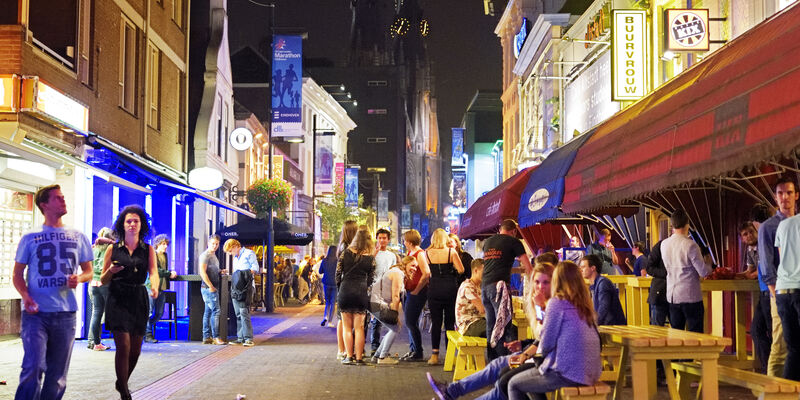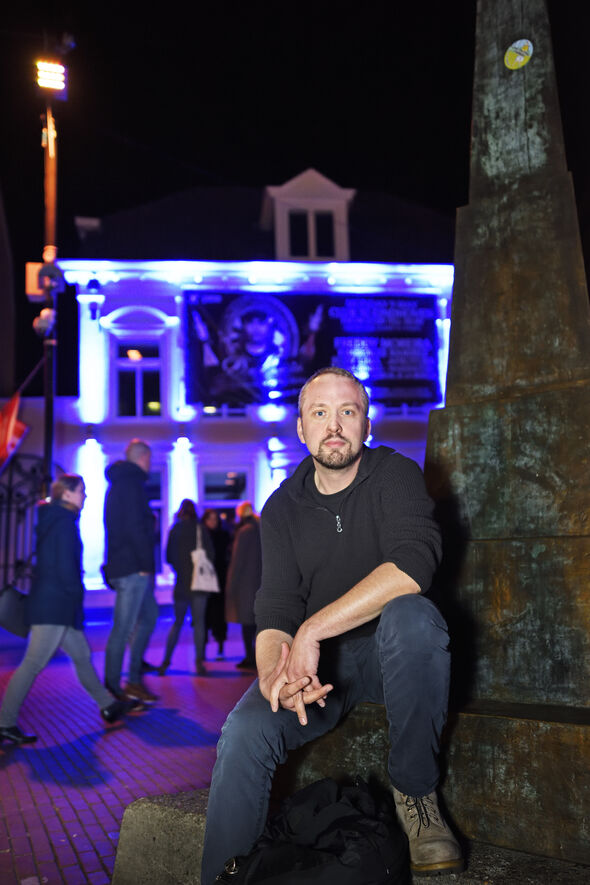
- Research
- 19/05/2016
Light psychology in the wild
As an environmental psychologist Antal Haans feels like a fish in water at TU/e. Indeed, if you want to study the effect of the environment on human behavior, technology is indispensable. The Assistant Professor at Human-Technology Interaction is specialized in the effect of light on our feeling of safety and our tendency towards aggression. For instance, at Stratumseind he is investigating how lighting can contribute to a safer night life.
It is not only beta scientists and engineers who conduct research in laboratories; a great many psychological insights have been gathered in the lab as well. In a way, a human being in a psychology lab is not different from a monkey in a cage: the question is just to what extent he shows ‘natural’ behavior there. That is a question which also engages Antal Haans’ attention. “Laboratory experiments are often not ‘ecologically valid’”, is how the environmental psychologist formulates the problem. “Especially when it concerns aggression; then it is studied, for example, how hard the human subject lunges at a punching bag. I wouldn’t really call that realistic.”
On the other hand, realistic situations are often so complex that it is very difficult to ascribe behavior to specific stimuli from the environment. On behalf of TU/e Haans is responsible for the light research that is taking place in Eindhoven’s nightlife street Stratumseind within the framework of the De-escalate project. In cooperation with parties including the municipality of Eindhoven and Philips it is investigated how variable (street) lighting may be deployed to curb aggression. The first eighteen months of the project have brought home to him once more how complicated psychological research ‘in the wild’ is. “On the spot we have replaced all street lighting by LED lights whose color can be preprogramed, or adjusted from the command center in the Oude Rechtbank according to the situation. Of course, light is not the only factor to be considered when aggressive situations arise. For one, there is also a lot of noise coming from all corners and pubs and cafés.”
It goes without saying that such disruptive influences can be eliminated from the research data, provided you have enough measurements. That is where the shoe pinches, though: in fact there are not that many incidents occurring at Stratumseind. “Whilst that street may not have a very good reputation, there is not more going on there than can be expected for an area of that size with so much entertainment.” And Haans is of the opinion that it is not enough to underpin sound statistics. “Our students regularly spend all night there to observe, have visitors do tests and talk to police, bouncers and bar staff, but incidents always seem to occur when you are not on the site.”
For the time being De-escalate yields a great deal of knowledge about the snags you encounter when conducting psychological experiments ‘in the wild’. “For us it is also a lesson in methodology”, Haans admits. “We use adjusted tests on the tablet that have been developed to measure aggression in the lab, involving pictures where subjects are asked to imagine they are the main character and indicate what their feelings are. All of that has to go very swiftly, for those people are having a night out. It takes a lot of time to elaborate everything - to code it -; only then can we assess how useful that information is.”

Discussion